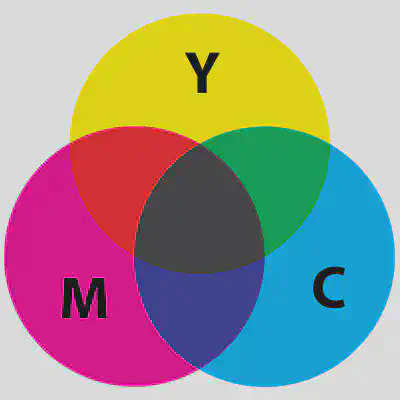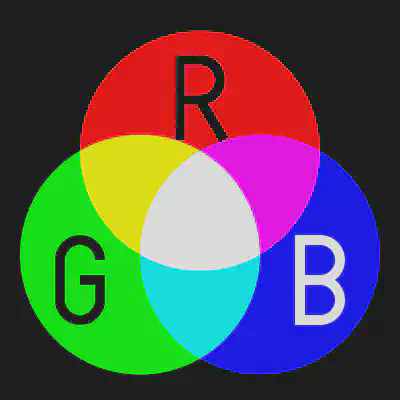When you send a digital file to a printer, what you see on your computer screen is not always accurately represented in physical form.
This is due to differing colour models, printing surfaces, as well as printing techniques. Here are a few of the variables at play.
Halftone
Halftone is printing technique that simulates continuous tone through the use of dots, varying either in size or in spacing, thus creating different tones. A halftone cell is a square area in a halftone screen which contains an array of printing dots.
When you scan images from printed material like magazines, the scanned images will have a crosshatched/dotted pattern from the printed material. This visual interference is called a moire pattern. Moire patterns are caused by interference between two sets of fine pattern grids, the scanner samples and the halftone screen in the original image.
Lines Per Inch & Dots Per Inch
LPI (lines per inch) are the offset printing “lines” or dots per inch in a halftone or line screen. DPI (dots per inch) are the units used in order to measure the resolution of the printer. The minimum for faithful reproduction is 2-times the line screen in use. When digitizing a photo, you want to sample it twice the frequency of the line screen in order to ensure that it will reproduce faithfully.
Halftone screens are measured in LPI. This refers to how many rows, or lines, of dots, fit in a linear inch. The appropriate halftone frequency depends on the paper stock and type of press used for printing. For example:
- Newspapers (~85 LPI)
- Magazines (~133-150 LPI)
The relationship between image resolution and screen frequency determines the quality of detail in the printed image.
True DPI is the original DPI of the source image. Effective DPI is the “resized” DPI of the source image. It is possible for effective and true DPI to be the same if the original image has not been resized in any way. It is really important to be aware of these values if you are making an image larger, as too low of a DPI will result in a softer/hazier image.
Printer Paper
Uncoated paper causes ink to spread and soak into the paper, causing it to dull. Coated paper on the other hand retains its vibrancy and is much better at colour fidelity as the colour does not shift and move around nearly as much.
Colour Models
A colour model is an abstract mathematical model describing the way colours can be represented as tuples of numbers. You do not mix colour models on one project because it will result in colour discrepancies.
Subtractive CMYK Colour Model
CMYK is a subtractive color model, used in color print media and is also used to describe the printing process itself.

Traditional process printing (CMYK) uses black ink as well because the “black” created by mixing cyan, magenta and yellow primaries is unsatisfactory and results in a muddied brown colour. Four-colour printing uses black in addition to the primaries.
- 100% of all three inks would soak the paper and take longer to dry
- unsatisfactory colour
- less expensive
- no blurring/more accurate registration if just one ink (black) is used. Very important with text.
Additive RGB Colour Model
RGB is an additive colour model and is primarily used for web (on screen). Media that transmit light (such as your mobile phone or table) use additive color mixing with primary colors of red, green, and blue.

Hexachrome is a discontinued printing process designed by Pantone Inc. which used six colours (CMYKOG) to get around certain limitations of CMYK/four colour printing. Hexachrome adds orange and green inks to expand the colour gamut, for better colour reproduction